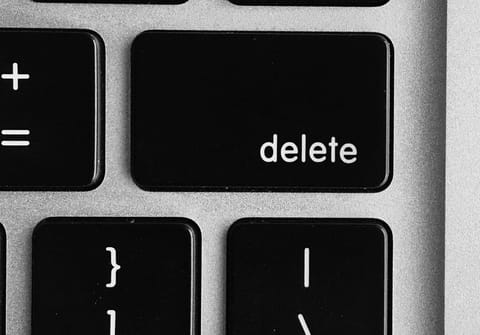How to delete files that cannot be deleted on Windows?

One of the most common problems that arises when attempting to clean out your system is a file's unwillingness to be deleted. This can be caused by a number of factors, including file or folder restrictions, system incompatibility, a computer virus, or third-party access to the file on a shared computer. If you are struggling to permanently delete a file on your computer, here are a few things to look out for.
How to ensure that the file or folder is not in use?
If you are using a shared computer, another user or program may be using the file/folder that you are trying to delete.
Ask other users to close their active programs and log off from their account. You should then restart your computer, log into your account, and try to delete the file/folder again.
How to run your system on safe mode?
If your system or the file has been infected by a virus, using the Safe Mode may allow you to delete the stubborn file, as most viruses are activated while running on normal mode.
Restart your system. When the first screen is displayed, press the F8 key on your keyboard.
Various booting options for your system will be listed on the screen. Using your keyboard arrows, select Safe Mode.
When the loading is complete, choose the file/folder that has to be deleted. Right-click on the file and click the Delete option.
N.B. Don't forget to empty the Recycle Bin by right-clicking on the icon and choosing the option "Empty Recycle Bin".
How to download or update your antivirus program?
If your computer system has been infected, you should first download an antivirus if you do not already have one. If you do, think about upgrading the current version of the software and run the scanning process again. Here are a few suggestions for good antivirus programs:
BitDefender
BitDefender is an antivirus and anti-spyware program that protects against phishing attacks. This program is available for both commercial and free trial use. System requirements for BitDefender include:
Windows 2000 equipped with Service Pack 4
Windows XP equipped with Service Pack 2 (32/64 bit)
Windows Vista (32/64 bit)
Kaspersky 7
Kaspersky 7 is an antivirus and anti-spyware program that protects against worms and Trojans. This program has a number of system and hardware requirements including:
Microsoft Windows XP Professional x64, Microsoft Windows 2000 Professional (Service Pack 4 or higher), Microsoft Windows XP Professional (Service Pack 2 or higher), Microsoft Windows XP Home Edition (Service Pack 2 or higher), Microsoft Windows Vista, Microsoft Windows Vista x64.
50MB of hard disk space, a CD-ROM player, Internet connection, Internet Explorer 5.5 or higher, Microsoft Windows Installer 2.0.
AVG Anti-Virus 8
Anti-Virus 8 is a free antivirus program that is compatible with various Windows systems, including Windows 2000, Windows XP, Windows XP Pro x64, Windows Vista, and Windows Vista x64.
System Requirements include CPU Intel Pentium (300MHz), 30MB of hard drive space, as well as 256MB of RAM.
How to use Notepad?
You can try to use Notepad++++ to open the file that you want to remove and bypass Windows Explorer and its indexing.
- Open Notepad and go to the File > Open.
- Ensure that the File Type option is set to All files and not only Text documents.
- Once you have located the file that you would like to delete, right-click on it and select Delete.
- Do not double-click the file.
- Make sure to empty your Recycle Bin once you've finished this process.
How to deactivate the indexing service?
- Go to your Start button and choose Control Panel. Select the Administrative Tools option and click on the Services tab.
- Find the Indexing option located in the lower section of the window.
- Select the Stop button.
- Without closing the window, try to delete the file again. When finished, you can set your configuration to its initial settings or choose to disable the indexing option.
How to use MoveOnBoot?
MoveOnBoot is a simple freeware utility that will let you delete the files that you want to remove before your computer system locks them. Before your system even starts, changes are done to your hard drive.
You may download the software here.
- Following installation, run the program and browse for the file that you would like to delete.
- Select the Delete option and click OK.
- Reboot your system at any time to ensure that the changes take effect.
